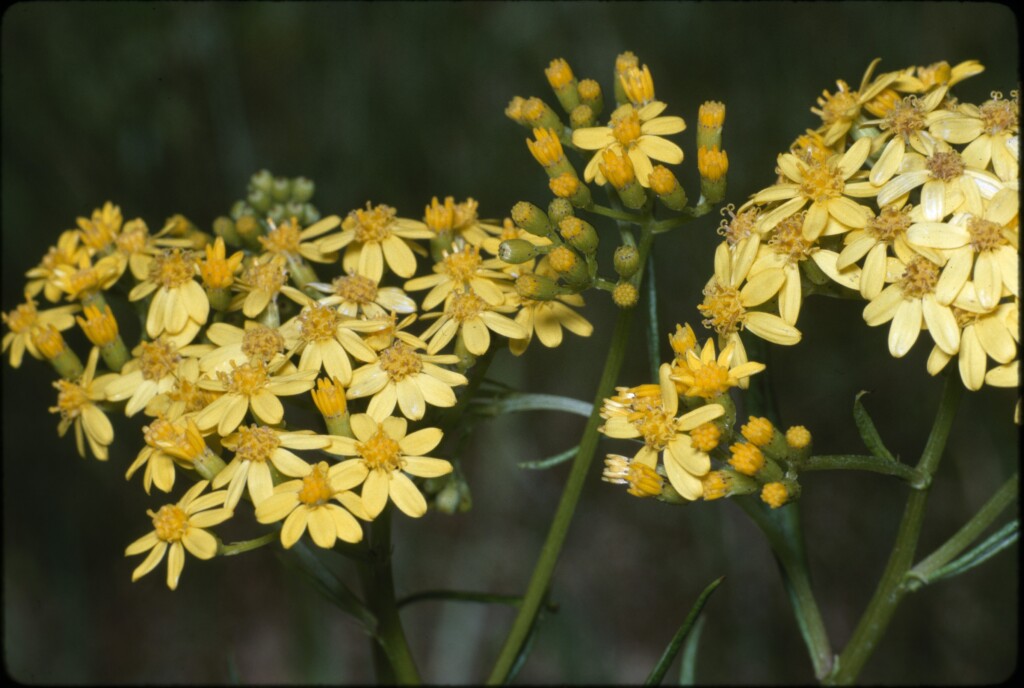Senecio linearifolius var. linearifolius
Plants not glaucous. Upper-stem leaves very narrow-elliptic, narrow-lanceolate or linear to narrow-linear, to 15 cm long, with l:w ratio 5–30, commonly greater than 10; base (excluding auricles) narrow-cuneate to attenuate; auricles often present, largely discontinuous with lamina, entire or with a smaller lobe or segment near base and on proximal margin; margin entire or callus-denticulate, mostly narrowly revolute; lower surface glabrous or slightly or occasionally moderately ± appressed-cobwebby; secondary venation not or slightly raised; tertiary venation usually obscure. Involucre 3.0–5.0 mm long, 1.5–2.5 mm diam.; bracts 8–13. Florets 12–22; ray florets 4–8; disc florets 8–14. Cypselas 1.3–2.0 mm long, papillose-hairy in bands. Flowers Sept.–May.
VVP, VRiv, GipP, OtP, WaP, Gold, CVU, GGr, EGL, EGU, HSF, HNF, OtR, MonT, VAlp. Also SA (uncertain origin), Tas. Scattered throughout the south of the state in forests and woodlands.
This variety exhibits variation in the shape, thickness and indumentum of the leaves throughout its range. Plants from the Brisbane Ranges have very narrow and occasionally woolly leaves, those from coastal areas have leaves that are fleshier han those further inland, and those from south-west Victoria approach var. gariwerdensis but have narrower leaves and more prominent auricles, and east of Melbourne var. linearifolius possibly intergrades with var. denticulatus (Thompson 2004b).
 Spinning
Spinning

